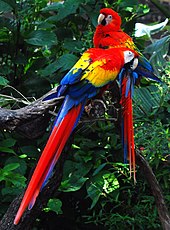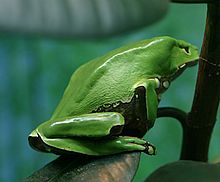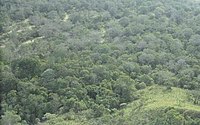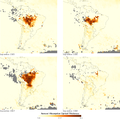

|
|
|||||||
| المواد الادبية و اللغات كل ما يخص المواد الأدبية و اللغات : اللغة العربية - التربية الإسلامية - التاريخ و الجغرافيا -الفلسفة - اللغة الأمازيغية - اللغة الفرنسية - اللغة الأنجليزية - اللغة الاسبانية - اللغة الألمانية |
في حال وجود أي مواضيع أو ردود
مُخالفة من قبل الأعضاء، يُرجى الإبلاغ عنها فورًا باستخدام أيقونة
![]() ( تقرير عن مشاركة سيئة )، و الموجودة أسفل كل مشاركة .
( تقرير عن مشاركة سيئة )، و الموجودة أسفل كل مشاركة .
| آخر المواضيع |
|
 |
|
|
أدوات الموضوع | انواع عرض الموضوع |
|
|
رقم المشاركة : 16 | |||||
|
اقتباس:
و كيعاد تحب تجدد ننصحك تعمل صور في بحثك ، ربي يوفقك تحياتي لك اخي الكريم
|
|||||

|
|
|
رقم المشاركة : 17 | ||||
|
اقتباس:
شكرا على الاقتراح
لقد أعددت بحثا و استعملت صورا قليلة كي تزربت برك لازم غدا نقدموا سأطرحه و أعطيني رايك فيه. أوكي؟ جزاك الله ألف خير على المساعدة التي تعني لي الكثير الله يوفقك و يخليك ان شاء الله في أمان الله |
||||

|
|
|
رقم المشاركة : 18 | |||
|
و أنا شكون اللي يساعدني راني حاصلة |
|||

|
|
|
رقم المشاركة : 19 | |||
|
ايه ماكانش مشكل ، و اذا حاب نعاونك في الصور
|
|||

|
|
|
رقم المشاركة : 20 | |||
|
مشكووووووووووورة أختي تيتا
الله يباركلك في حياتك ان شاء الله راني درت صور قلال و قدمتو اليوم و عجب الأستاذة أي استفسار أو سؤال أطلبي و راح نعاونك ان شاء الله لكن ديري في حسابك بلي نقرى علوم تجريبية مساعدتك تعني لي الكثير بالتوفيق ان شاء الله |
|||

|
|
|
رقم المشاركة : 21 | ||||
|
اقتباس:
لكن ساعديني بالعناوين مثلا أكتبلي واش المطلوب البحث في هاذ البحث؟ و راح نعاونك ان شاء الله |
||||

|
|
|
رقم المشاركة : 22 | |||
|
ربي يخلليك خويا راني في ورطة |
|||

|
|
|
رقم المشاركة : 23 | |||
|
الموقع : تقع غابات الأمازون في البرازيل في قارة أمريكا الجنوبية |
|||

|
|
|
رقم المشاركة : 24 | |||
|
|
|||

|
|
|
رقم المشاركة : 25 | |||
|
و اذا حابة صور اخرى نزيدك |
|||

|
|
|
رقم المشاركة : 26 | |||
|
دوختني كلمة اول طلب يا شعيب |
|||

|
|
|
رقم المشاركة : 27 | ||||
|
اقتباس:
ماعليش خويا حقيقة هذا أول طلب لي في هذا القسم |
||||

|
|
|
رقم المشاركة : 28 | |||
|
بارك الله فيك أختي تيتا على عملك الرائع |
|||

|
|
|
رقم المشاركة : 29 | ||||
|
اقتباس:
راح نعاونك بكل ما عندي |
||||

|
|
|
رقم المشاركة : 30 | |||
|
Amazon Rainforest
The Amazon Rainforest (in Portuguese, Floresta Amazônica or Amazônia; Spanish: Selva Amazónica or Amazonia), also known as Amazonia or Amazon Jungle, is a moist broadleaf forest that covers most of the Amazon Basin of South America. This basin encompasses seven million square kilometers (1.7 billion acres), of which five and a half million square kilometers (1.4 billion acres) are covered by the rainforest. This region includes territory belonging to nine nations. The majority of the forest is contained within Brazil, with 60% of the rainforest, followed by Peru with 13%, and with minor amounts in Colombia, Venezuela, Ecuador, Bolivia, Guyana, Suriname and French Guiana. States or departments in four nations bear the name Amazonas after it. The Amazon represents over half of the planet's remaining rainforests, and it comprises the largest and most species-rich tract of tropical rainforest in the world. The Amazon rainforest was short-listed in 2008 as a candidate to one of the New7Wonders of Nature by the New Seven Wonders of the World Foundation. As of February 2009 the Amazon was ranking first in Group E, the category for forests, national parks and nature reserves.[1]   History The rainforest likely formed during the Eocene era. It appeared following a global reduction of tropical temperatures when the Atlantic Ocean had widened sufficiently to provide a warm, moist climate to the Amazon basin. The rain forest has been in existence for at least 55 million years, and most of the region remained free of savanna-type biomes at least until the current ice age, when the climate was drier and savanna more widespread.[3][4] Following the Cretaceous–Tertiary extinction event, the extinction of the dinosaurs and the wetter climate may have allowed the tropical rainforest to spread out across the continent. From 65–34 Mya, the rainforest extended as far south as 45°. Climate fluctuations during the last 34 million years have allowed savanna regions to expand into the tropics. During the Oligocene, for example, the rainforest spanned a relatively narrow band that lay mostly above latitude 15°N. It expanded again during the Middle Miocene, then retracted to a mostly inland formation at the last glacial maximum.[5] However, the rainforest still managed to thrive during these glacial periods, allowing for the survival and evolution of a broad diversity of species.[6] During the mid-Eocene, it is believed that the drainage basin of the Amazon was split along the middle of the continent by the Purus Arch. Water on the eastern side flowed toward the Atlantic, while to the west water flowed toward the Pacific across the Amazonas Basin. As the Andes Mountains rose, however, a large basin was created that enclosed a lake; now known as the Solimões Basin. Within the last 5–10 million years, this accumulating water broke through the Purus Arch, joining the easterly flow toward the Atlantic.[7][8] There is evidence that there have been significant changes in Amazon rainforest vegetation over the last 21,000 years through the Last Glacial Maximum (LGM) and subsequent deglaciation. Analyses of sediment deposits from Amazon basin paleolakes and from the Amazon Fan indicate that rainfall in the basin during the LGM was lower than for the present, and this was almost certainly associated with reduced moist tropical vegetation cover in the basin.[9] There is debate, however, over how extensive this reduction was. Some scientists argue that the rainforest was reduced to small, isolated refugia separated by open forest and grassland;[10] other scientists argue that the rainforest remained largely intact but extended less far to the north, south, and east than is seen today.[11] This debate has proved difficult to resolve because the practical limitations of working in the rainforest mean that data sampling is biased away from the center of the Amazon basin, and both explanations are reasonably well supported by the available data. Based on archaeological evidence from an excavation at Caverna da Pedra Pintada, human inhabitants first settled in the Amazon region at least 11,200 years ago.[12] Subsequent development led to late-prehistoric settlements along the periphery of the forest by 1250 CE, which induced alterations in the forest cover.[13] Biologists believe that a population density of 0.2 persons/km2 is the maximum that can be sustained in the rain forest through hunting. Hence, agriculture is needed to host a larger population.[14] The first European to travel the length of the Amazon River was Francisco de Orellana in 1542.[15]  Biodiversity Wet tropical forests are the most species-rich biome, and tropical forests in the Americas are consistently more species rich than the wet forests in Africa and Asia.[16] As the largest tract of tropical rainforest in the Americas, the Amazonian rainforests have unparalleled biodiversity. One in ten known species in the world live in the Amazon Rainforest.[17] This constitutes the largest collection of living plants and animal species in the world. The region is home to about 2.5 million insect species,[18] tens of thousands of plants, and some 2,000 birds and mammals. To date, at least 40,000 plant species, 3,000 fish, 1,294 birds, 427 mammals, 428 amphibians, and 378 reptiles have been scientifically classified in the region.[19] One in five of all the birds in the world live in the rainforests of the Amazon. Scientists have described between 96,660 and 128,843 invertebrate species in Brazil alone.[20] The diversity of plant species is the highest on Earth with some experts estimating that one square kilometer may contain more than a thousand types of trees and thousands of species of other higher plants. According to a 2001 study, a quarter square kilometer of Ecuadorian rainforest supports more than 1,100 tree species.[21] One square kilometer of Amazon rainforest can contain about 90,790 tonnes of living plants. The average plant biomass is estimated at 356 ± 47 tonnes ha−1.[22] To date, an estimated 438,000 species of plants of economic and social interest have been registered in the region with many more remaining to be discovered or catalogued.[23] The green leaf area of plants and trees in the rainforest varies by about 25% as a result of seasonal changes. Leaves expand during the dry season when sunlight is at a maximum, then undergo abscission in the cloudy wet season. These changes provide a balance of carbon between photosynthesis and respiration.[24] The rainforest contains several species that can pose a hazard. Among the largest predatory creatures are the Black Caiman, Jaguar, Cougar, and Anaconda. In the river, electric eels can produce an electric shock that can stun or kill, while Piranha are known to bite and injure humans.[25] Various species of poison dart frogs secrete lipophilic alkaloid toxins through their flesh. There are also numerous parasites and disease vectors. Vampire bats dwell in the rainforest and can spread the rabies virus.[26] Malaria, yellow fever and Dengue fever can also be contracted in the Amazon region.   Deforestation Deforestation is the conversion of forested areas to non-forested areas. The main sources of deforestation in the Amazon are human settlement and development of the land.[27] Prior to the early 1960s, access to the forest's interior was highly restricted, and the forest remained basically intact.[28] Farms established during the 1960s were based on crop cultivation and the slash and burn method. However, the colonists were unable to manage their fields and the crops because of the loss of soil fertility and weed invasion.[29] The soils in the Amazon are productive for just a short period of time, so farmers are constantly moving to new areas and clearing more land.[29] These farming practices led to deforestation and caused extensive environmental damage.[30] Deforestation is considerable, and areas cleared of forest are visible to the naked eye from outer space. Between 1991 and 2000, the total area of forest lost in the Amazon rose from 415,000 to 587,000 km2, with most of the lost forest becoming pasture for cattle.[31] Seventy percent of formerly forested land in the Amazon, and 91% of land deforested since 1970, is used for livestock pasture.[32][33] In addition, Brazil is currently the second-largest global producer of soybeans after the United States. The needs of soy farmers have been used to validate many of the controversial transportation projects that are currently developing in the Amazon. The first two highways successfully opened up the rain forest and led to increased settlement and deforestation. The mean annual deforestation rate from 2000 to 2005 (22,392 km2 per year) was 18% higher than in the previous five years (19,018 km2 per year).[34] Deforestation has declined significantly in the Brazilian Amazon since 2004.[35]  Conservation and climate change Environmentalists are concerned about loss of biodiversity that will result from destruction of the forest, and also about the release of the carbon contained within the vegetation, which could accelerate global warming. Amazonian evergreen forests account for about 10% of the world's terrestrial primary productivity and 10% of the carbon stores in ecosystems[36]—of the order of 1.1 × 1011 metric tonnes of carbon.[37] Amazonian forests are estimated to have accumulated 0.62 ± 0.37 tons of carbon per hectare per year between 1975 and 1996.[37] One computer model of future climate change caused by greenhouse gas emissions shows that the Amazon rainforest could become unsustainable under conditions of severely reduced rainfall and increased temperatures, leading to an almost complete loss of rainforest cover in the basin by 2100.[38][39] However, simulations of Amazon basin climate change across many different models are not consistent in their estimation of any rainfall response, ranging from weak increases to strong decreases.[40] The result indicates that the rainforest could be threatened though the 21st century by climate change in addition to deforestation. In 1989, environmentalist C.M. Peters and two colleagues stated there is economic as well as biological incentive to protecting the rainforest. One hectare in the Peruvian Amazon has been calculated to have a value of $6820 if intact forest is sustainably harvested for fruits, latex, and timber; $1000 if clear-cut for commercial timber (not sustainably harvested); or $148 if used as cattle pasture.[41] As indigenous territories continue to be destroyed by deforestation and ecocide, such as in the Peruvian Amazon[42] indigenous peoples' rainforest communities continue to disappear, while others, like the Urarina continue to struggle to fight for their cultural survival and the fate of their forested territories. Meanwhile, the relationship between nonhuman primates in the subsistence and symbolism of indigenous lowland South American peoples has gained increased attention, as has ethno-biology and community-based conservation efforts. From 2002 to 2006, the conserved land in the Amazon rainforest has almost tripled and deforestation rates have dropped up to 60%. About 1,000,000 square kilometres (250,000,000 acres) have been put onto some sort of conservation, which adds up to a current amount of 1,730,000 square kilometres (430,000,000 acres).[43    |
|||

|
 |
| الكلمات الدلالية (Tags) |
| ممكن, استقباله؟, طلب، |
|
|
المشاركات المنشورة تعبر عن وجهة نظر صاحبها فقط، ولا تُعبّر بأي شكل من الأشكال عن وجهة نظر إدارة المنتدى
المنتدى غير مسؤول عن أي إتفاق تجاري بين الأعضاء... فعلى الجميع تحمّل المسؤولية
Powered by vBulletin .Copyright آ© 2018 vBulletin Solutions, Inc